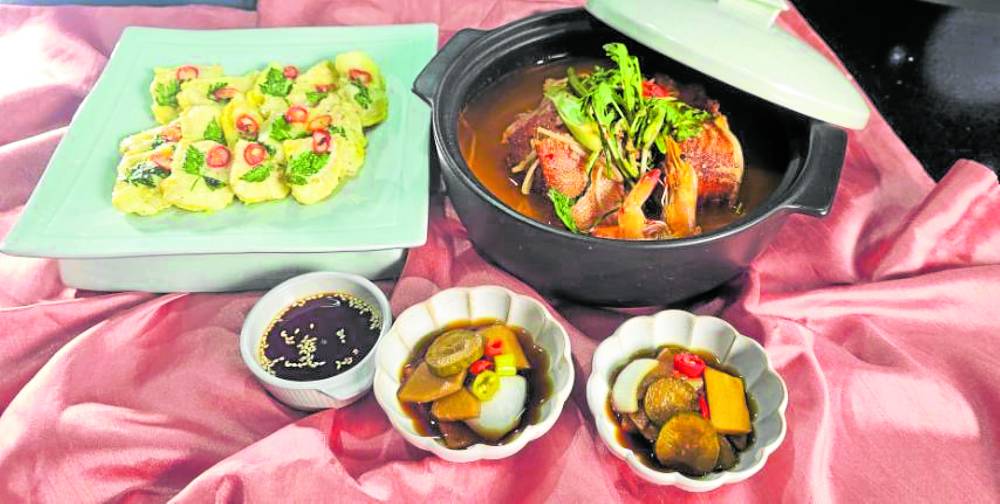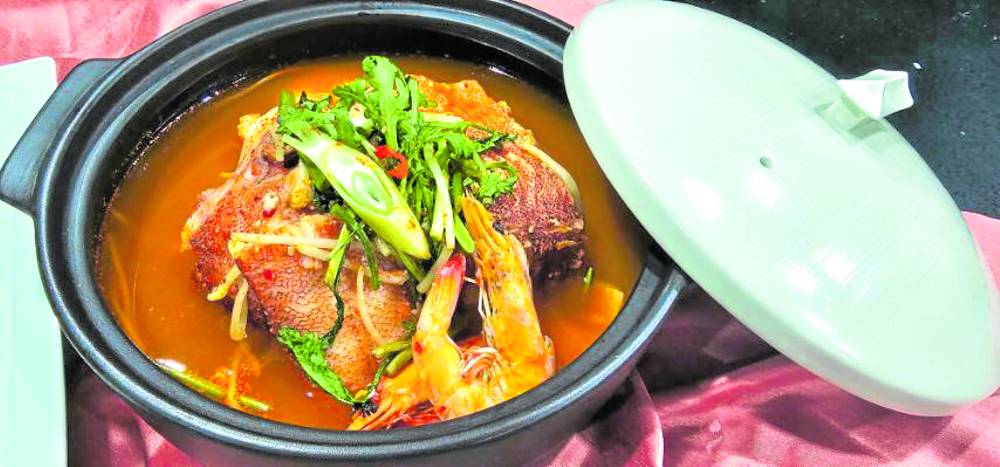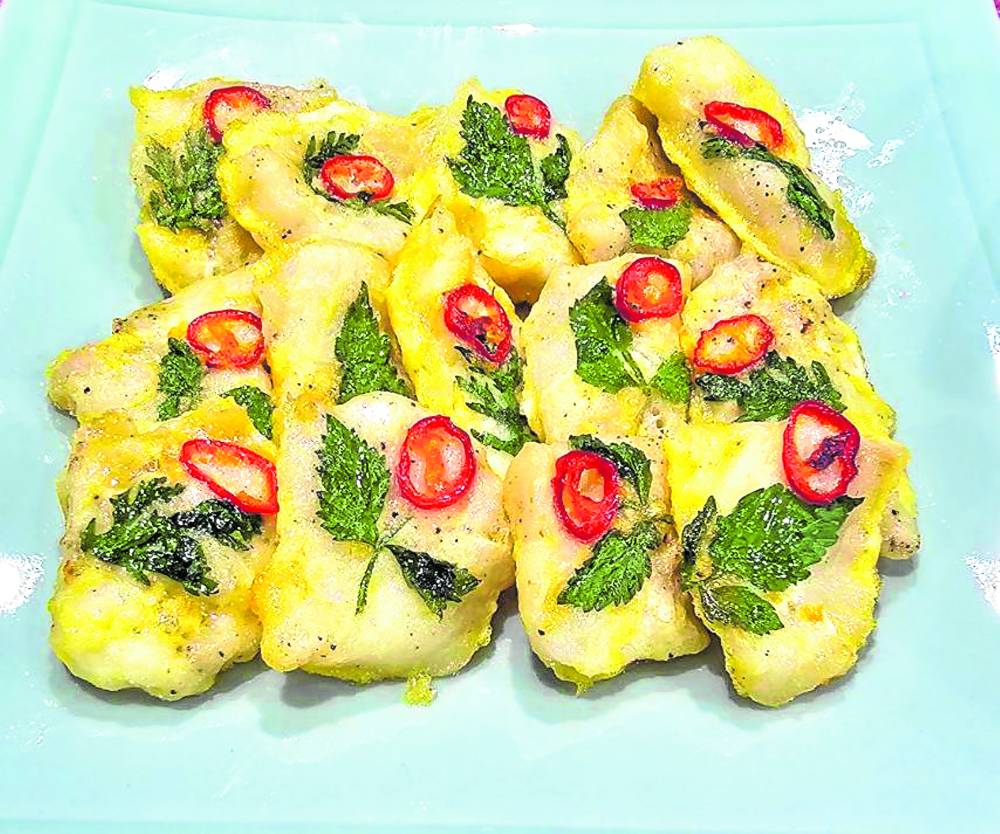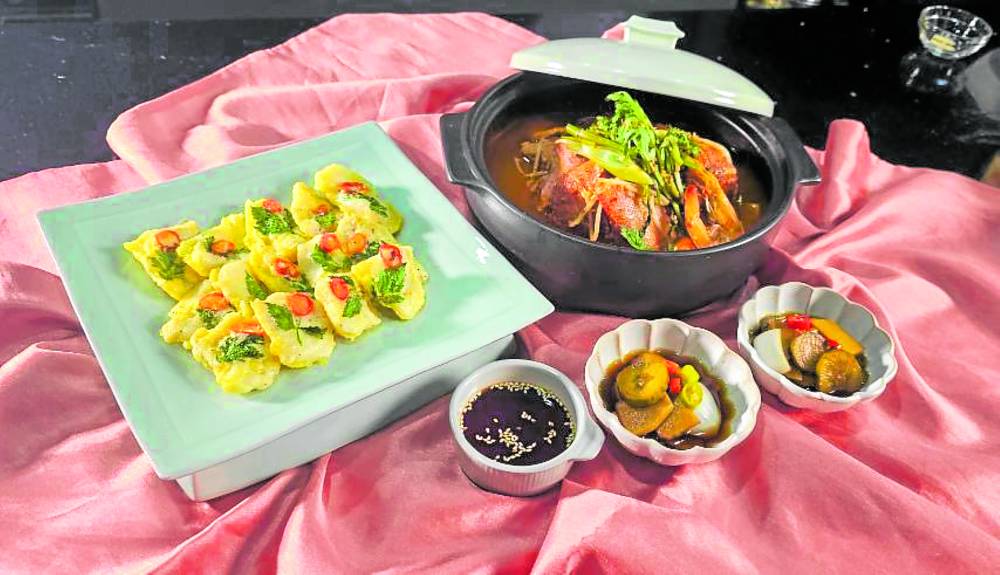
It cannot be denied that we have all fallen in love with Korean cuisine. K-pop, the phenomenon that took the world by storm, has made us more aware of Korean culture, and with it, a greater understanding of their customs, traditions and cuisine.
Chef Lily Min has been in the Philippines since 2004. She has been the resident chef of the Korean Cultural Center (KCC), where she teaches Korean cookery.
It has become Lily’s mission not only to entice everyone to embrace Korean culture, but also to introduce other delectable dishes that remain unknown to many.
There is so much more to their food than just japchae, galbi, galbijjim, bulgogi, samgyupsal, yangnyeom chicken and tteokbokki.
I met Lily in September 2018, while covering a story on Chuseok (Korean Thanksgiving), and we’ve been “Seoul sisters” ever since.
We have shared meals, traveled, cooked and even penned the bestselling “K-Drama Cookbook” together.
It is from Lily that I learned the principles of Korean cuisine and the proper way to fully enjoy it. She is the ever so reliable resource person I run to when I want to clarify scenes from my favorite K-drama.
Being the passionate culinary instructor that she is, it was while watching the drama “Jewel in the Palace” that Lily first lectured me on the principles of obangsaek (O = five, bang = directions, saek = colors) in Korean cuisine.
The Korean word obangsaek pertains to the concept of five directions (east, west, north, south and center) and five colors (blue, white, black, red and yellow), where a direction is associated with a specific color.
HarmonyObangsaek is connected with the elements of the earth, the seasons and the organs of the body where a specific color benefits certain organs: blue (green)—liver, gallbladder; red—heart, small intestines; yellow—spleen, stomach; white—lungs, large intestines; black—kidney, bladder.
Obangsaek represents harmony with nature, health and prosperity.
This is why in Korean royal cuisine, emphasis is given to preparing nutritious meals. Food is garnished to create the five colors associated with the organs of the body. If a dish only has three, two or more colors are added to ensure that every organ is nourished when the dish is partaken of.
Lily is big on eating healthy, and on finding the most nutritious local ingredients to add to her repertoire of Korean dishes.
She shared her latest creations, home-cooked Korean style meals using Pinoy ingredients that were showcased during an event at the KCC, to highlight the versatility of Korean cuisine and our local ingredients.
Oh, I learned that Lily’s favorite is sayote, that she cooks from end to end, root to fruit!
While at lunch, she showed me photos from her “Sangkap Pinoy” lecture, then whispered, “I hope more people will try to cook the dishes.”

‘Maeuntang’ (Spicy ‘Lapu-lapu’ Stew)
- 600 g lapu-lapu4-5 pc (1 c) shrimp, deveined (or clams)
- 250 g radish
- 150 g bean sprouts
- 70 g water parsley
- ½ stalk green onion
- 1 each red and green chilis
- 3 Tbsp mirim (or soju)
- 6 c anchovy broth (or water)
- Seasoning2 Tbsp chili powder
- ½ Tbsp chili paste
- 2 Tbsp anchovy sauce
- 2 Tbsp garlic
- 1 tsp ginger
- 1 pinch black pepper
- ⅔ tsp salt
- 1.5 liters water
- 20 g anchovy
- 2 pcs kelp
Remove guts, scales and fins of the lapu-lapu. Cut it into 5 cm-long pieces and rinse with water.
Remove leaves of water parsley. Prepare only the stems. Cut radish into bite sizes of flat square. Slice green onion, green and red chilis diagonally.
In a small bowl, combine all the seasoning ingredients and mix well. Put broth in a pot along with the radish and the seasonings. Bring to a boil. Cook until radish is soft.
Add fish, shrimp, bean sprouts and mirim. When fish is cooked, add water parsley, green onion and chilis.

‘Lapu-lapu Jeon’ (‘Lapu-lapu’ Pancake)
- 500 g lapu-lapu fillet
- 1 c flour
- 3 eggs
- Salt and pepper
- Cooking oil
- Dipping sauce1 Tbsp soy sauce
- 1 Tbsp vinegar
- 1 tsp sugar
- 1 pinch sesame seed
- Garnish (optional)1 pc (dried) red chili
- 3-4 stems crown daisy
Rinse lapu-lapu fillet in cold water. Pat dry with paper towel. Cut fillets into big bite-size pieces. Sprinkle salt and pepper on both sides.
Prepare crown daisy by removing the leaves one by one. Cut red chili into thin rings.
Whisk eggs with two pinches of salt. Lightly dredge fish in flour. Dip fish in egg.
Heat pan and coat with oil.
Place fish fillet in pan and top with crown daisies and red chili. Pan-fry fish until light golden brown.
Mix sauce ingredients and serve with pancakes.

‘Sayote Jangajji’ (‘Sayote’ Pickle)
- 500 g sayote½ pc (100 g) onion
- 100 g (1pc) cucumber
- 2 pcs siling labuyo2 pcs green chili
- 1 c each soy sauce, vinegar, sugar, anchovy stock or water
Peel sayote and cut into bite-sized pieces. Cut onions into bite-size pieces. Cut cucumber lengthwise. Remove seeds and cut into bite-size pieces. Slice chilies.
Put ingredients in a pot and boil till sugar dissolves. Put vegetables in a container and pour the prepared sauce.
Store pickled soy sayote in an airtight container when cooled down. INQFollow @iamreggieaspiras on Instagram and Facebook; reggieaspiras.com.














































